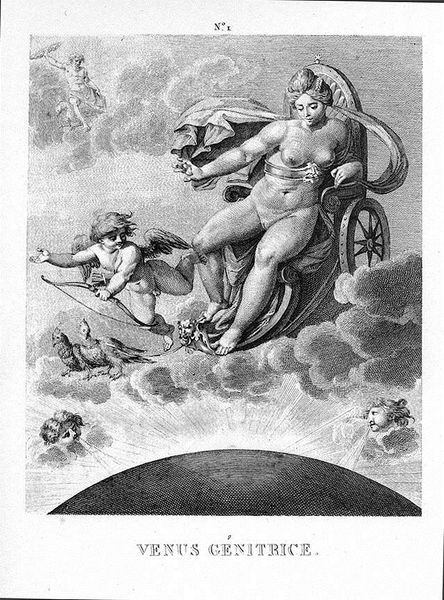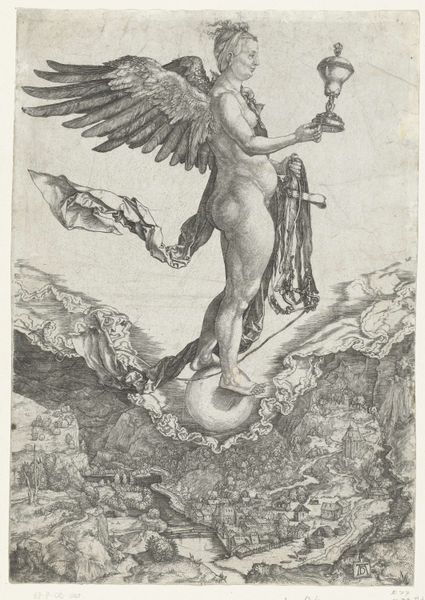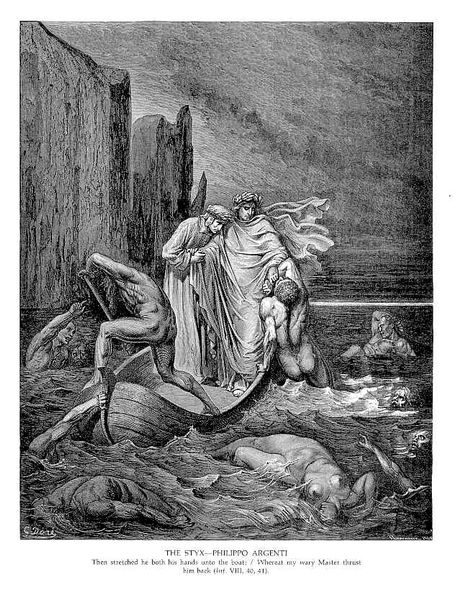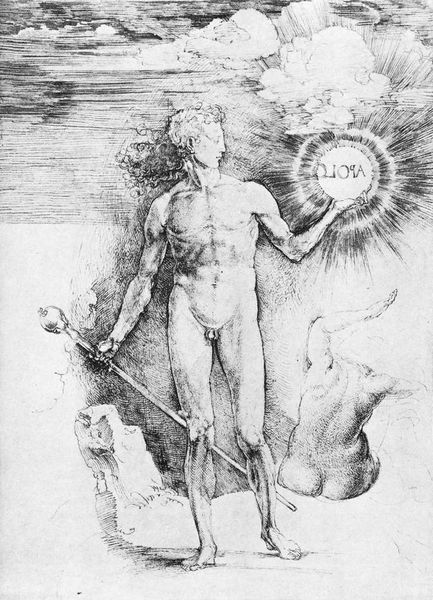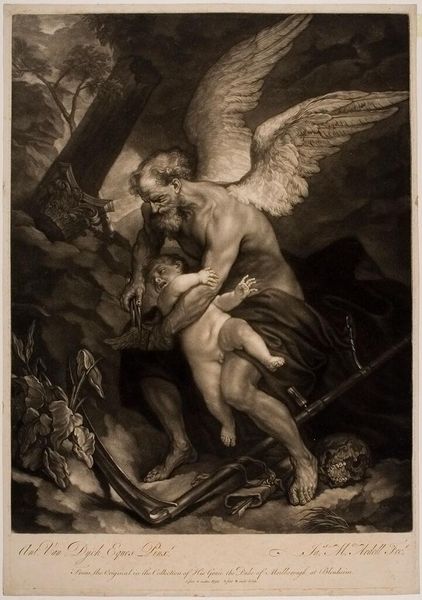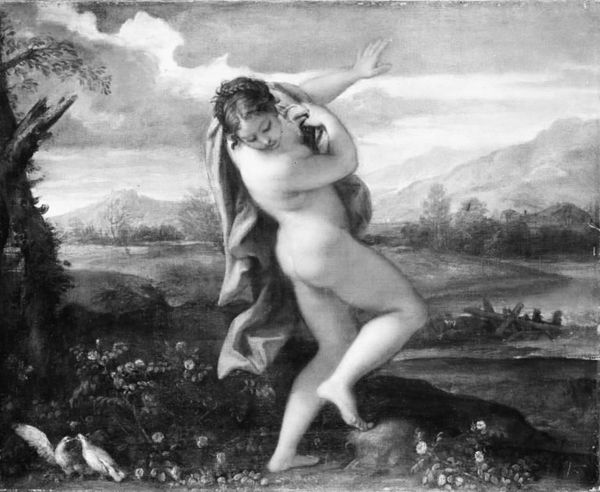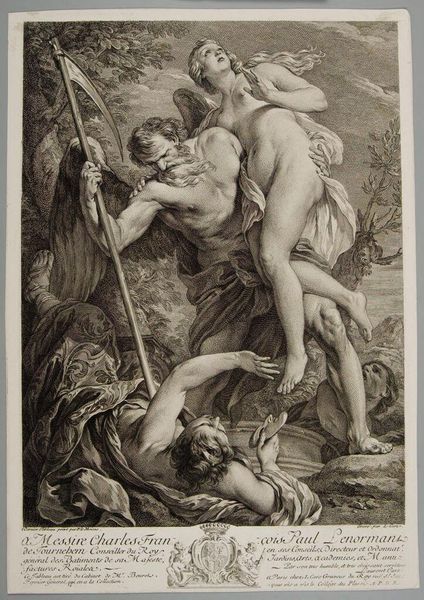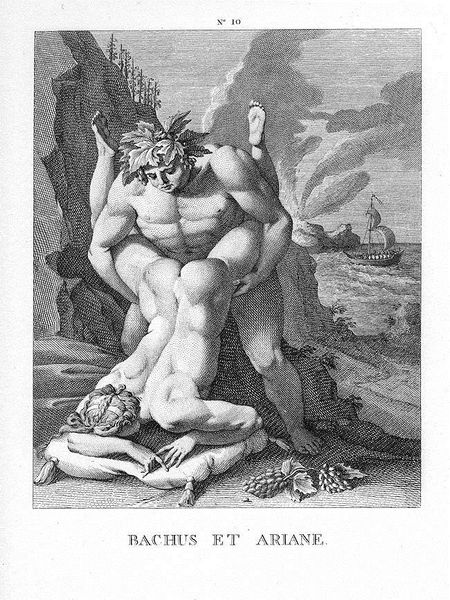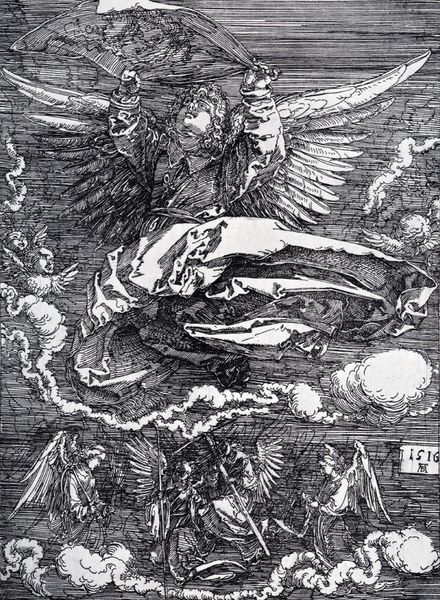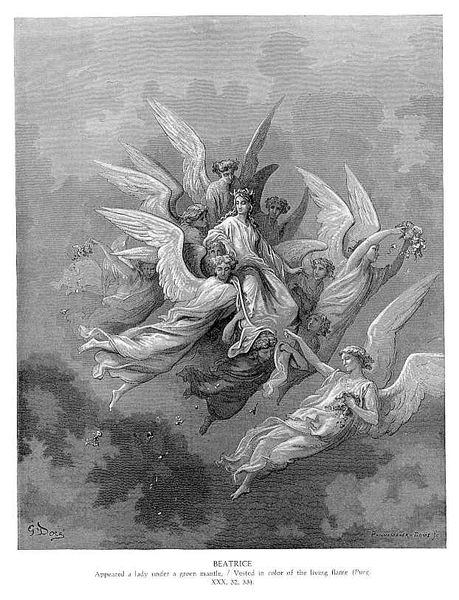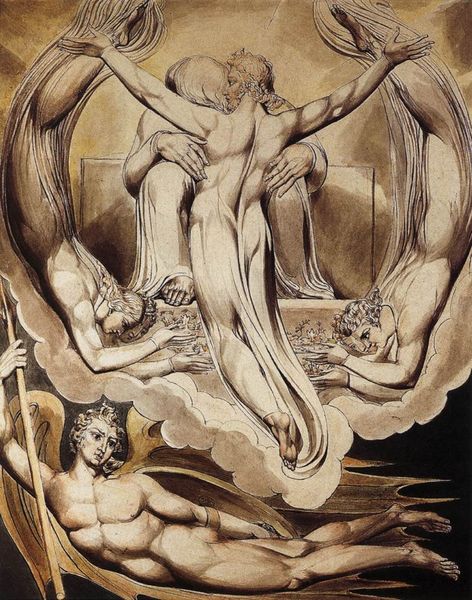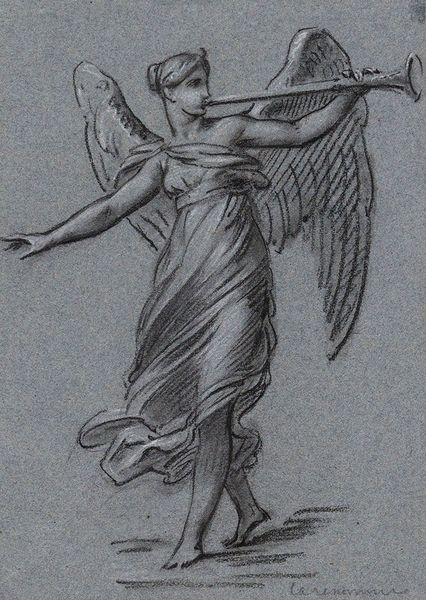
Copyright: Public domain
Curator: Albrecht Dürer created this engraving, "Nemesis (The Great Fortune)", in 1503. It's a fascinating example of Northern Renaissance printmaking. Editor: My first impression is a curious mix of ethereal and grounded. The winged figure dominates, yet her rather sturdy form and that meticulously detailed landscape create an interesting tension. Almost like a daydream planted firmly on earth. Curator: Indeed. Dürer’s skilled manipulation of the engraving technique allows for that detailed landscape. The varying densities of lines produce rich textures. Consider the materials themselves: the copperplate, the inks, the paper…each contributing to the final image we see before us. The widespread dissemination of this print allowed Dürer's visual ideas to impact a broader audience, beyond just the elite who could afford paintings. Editor: It also gives me a slight sense of imbalance. She's standing precariously on that globe. Is this Nemesis doling out reward with the chalice and punishment with that bit of folded fabric? She feels both powerful and vulnerable. Like fortune itself perhaps? Curator: Exactly. We see Nemesis, a classical goddess of retribution, rendered within the context of early 16th-century society grappling with changing social structures and growing mercantile economies. Note her position above the detailed German landscape. Dürer links larger economic forces and questions of fortune directly to earthly, local conditions, visualizing intangible themes of risk and reward in everyday German life. Editor: There's a touch of morbid beauty in it all. Nemesis isn't idealized. The wings, the figure, the goblet and even that dramatic swath of fabric, I bet Durer used those to play with the light within the engraving. The very human figure reminds us even gods and goddesses must face human conditions. I find it strangely uplifting. Curator: Your interpretation wonderfully illustrates the complexities Dürer imbued in his work, inviting layered meaning depending on each observer. It reveals much when considering art production in relation to changing material realities in the early sixteenth century. Editor: Thank you. Art's magic truly lies in allowing one to reflect, so much beauty from a copper plate and ink.
Comments
No comments
Be the first to comment and join the conversation on the ultimate creative platform.
